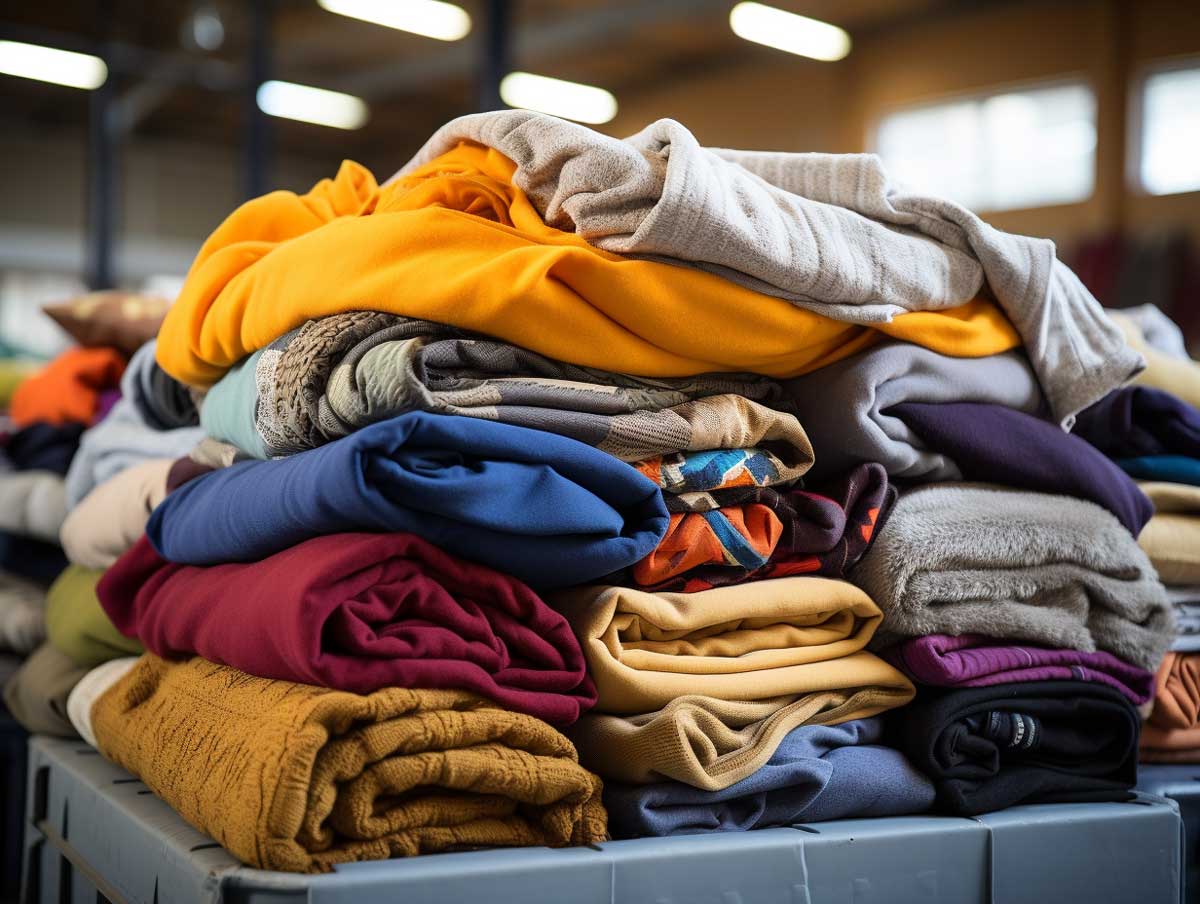In every community, there are individuals and families who face financial hardships. These challenges can sometimes make it difficult for them to afford basic necessities, such as clothing. Recognizing this need, many communities have established free clothing banks to provide assistance.
This article offers an overview of free clothing banks, their importance, and how you can locate one in your area. Explore the vital role of free clothing banks in your community. Learn about their importance, how to find them, and how you can contribute. This comprehensive guide also provides information on specific assistance programs offering free clothing banks and their eligibility criteria.
What Are Free Clothing Banks?
Free clothing banks are community-driven initiatives where donated clothes are collected, sorted, and distributed to those in need at no cost. These banks can be standalone organizations, or they can be part of larger charitable institutions, such as churches, community centers, or shelters.
Why Are Clothing Banks Important?
-
Meeting Basic Needs: Clothing is a fundamental human need. It provides protection from the elements, ensures personal hygiene, and offers a sense of dignity.
-
Economic Relief: For families struggling financially, the cost of clothing, especially for growing children, can be a significant burden. Clothing banks alleviate this pressure.
-
Environmental Impact: By reusing and recycling clothing, these banks help reduce waste, promoting a more sustainable and environmentally-friendly community.
-
Community Building: Clothing banks often rely on volunteers. This fosters a sense of community and solidarity as people come together to support their neighbors.
How To Find Free Clothing Banks Near Me
-
Local Directories: Many cities have local directories or websites that list charitable organizations, including clothing banks.
-
Community Centers: Local community centers often have information on resources available in the area, including clothing banks.
-
Churches And Religious Institutions: Many religious institutions operate or are affiliated with clothing banks. Even if they don't have one, they might know where to direct you.
-
Word Of Mouth: Sometimes, the best way to find resources is by asking around. Neighbors, friends, or coworkers might know of local clothing banks.
-
Online Search: A simple online search with terms like "free clothing bank near me" or "clothing donation centers in [your city]" can yield useful results.
How You Can Help
-
Donate Clothes: If you have clothes in good condition that you no longer need, consider donating them.
-
Volunteer: Many clothing banks rely on volunteers to sort and distribute clothes. Offer your time and make a difference.
-
Spread The Word: The more people know about these resources, the more they can benefit. Share information about local clothing banks on social media or in community groups.
The Process Of Clothing Banks:
Understanding the process of how clothing banks operate can help you better appreciate their work and potentially identify ways you can contribute.
-
Collection: Clothing banks collect donations from various sources. This can include individual donors, corporate partners, or clothing drives organized by schools, offices, or community groups.
-
Sorting And Storage: Once the clothes are collected, they need to be sorted. This usually involves checking the quality of the items, categorizing them by type (e.g., men's, women's, children's), and sometimes by size. The sorted clothes are then stored until they can be distributed.
-
Distribution: The distribution process can vary depending on the clothing bank. Some operate like a store where individuals can come in and choose what they need, while others may distribute bags of assorted clothing to families. Some clothing banks also partner with other local organizations to reach those in need.
Examples Of Successful Clothing Banks
To give you a better idea of what a clothing bank can achieve, here are a few examples of successful clothing banks across the United States:
-
St. Vincent de Paul: This organization operates thrift stores and clothing banks across the country. They not only provide clothing to those in need but also offer job training programs.
-
Dress For Success: This international organization provides professional attire and development tools to help women thrive in work and life.
-
Cradles To Crayons: Operating in several major cities, this organization provides children from birth through age 12 with essential items, including clothing, at no charge.
The Impact Of Clothing Banks
The impact of clothing banks extends beyond just providing clothes. They can help individuals maintain their dignity during tough times, enable children to attend school appropriately dressed, and even assist job seekers in making a good impression during interviews. By supporting clothing banks, you're not just helping someone get a new outfit; you're contributing to their self-esteem, their education, and their future.
Assistance Programs That Offer Free Clothing Banks
There are several assistance programs across the United States that offer free clothing banks. Here are a few notable ones:
-
The Salvation Army: The Salvation Army operates Family Stores and thrift stores nationwide where low-income families and individuals can access free or low-cost clothing. They also provide free clothing vouchers for their stores to those in need, which can be obtained through their social service departments.
-
Goodwill: While Goodwill is known for its thrift stores, many locations also have voucher programs. These programs provide free clothing to individuals in need, often in partnership with local social service agencies. Eligibility typically depends on the individual's circumstances and the specific requirements of the local Goodwill organization.
-
St. Vincent de Paul: This organization operates thrift stores and clothing banks across the country. They provide clothing to those in need, often at no cost or for a very low cost. Eligibility is typically based on need, and individuals can access services by contacting their local St. Vincent de Paul.
-
Dress For Success: This international organization provides professional attire to women who are entering or re-entering the workforce. Women are typically referred to Dress for Success by local social service agencies or job training programs.
-
Career Gear: Similar to Dress for Success, Career Gear provides professional clothing to men who are job hunting. Men are usually referred to Career Gear by non-profit organizations, schools, or government agencies that provide job training and employment assistance services.
-
Cradles To Crayons: This organization provides children from birth through age 12 living in homeless or low-income situations with essential items they need, including clothing, at no charge. Families typically access services through a network of social service partners.
-
Operation School Bell: Run by the Assistance League, this program provides new school clothes to children in need. Children are usually identified and referred by their schools.
-
Clothes To Kids: This non-profit provides free school clothing to low-income or in-crisis school-age children. Families can access services by obtaining a referral from a school official, social service agency, or from one of the many community organizations that partner with Clothes To Kids.
The Role Of Clothing Banks In Disaster Relief
Clothing banks play a crucial role in disaster relief efforts. In the aftermath of natural disasters like hurricanes, floods, or wildfires, many people may lose their possessions, including their clothes. Clothing banks can provide immediate relief to these individuals, supplying them with essential items during a challenging time.
Clothing Banks And Homelessness
For those experiencing homelessness, clothing banks can be a lifeline. They provide not only everyday clothing but also warm clothing for the winter months and professional attire for job interviews. By doing so, they help protect this vulnerable population from the elements and support them in their efforts to secure employment.
The Psychological Impact Of Clothing
Clothing isn't just about physical necessity; it also has a psychological impact. Wearing clean, well-fitting clothes can boost self-esteem and confidence. For children, having appropriate school clothes can prevent bullying and social isolation. For adults, especially those seeking employment, professional attire can make a significant difference in job interviews.
Clothing Banks And Community Engagement
Clothing banks offer an excellent opportunity for community engagement. They provide a platform for individuals, schools, businesses, and other organizations to come together and support a common cause. Whether it's through clothing drives, volunteering, or financial donations, community members can actively participate in helping those in need.
The Future Of Clothing Banks
As we move towards a more sustainable future, clothing banks have an increasingly important role to play. They promote the reuse of clothes, reduce waste, and encourage a circular economy. With growing awareness about the environmental impact of fast fashion, the work of clothing banks is becoming more relevant than ever.
Frequently Asked Questions
To help you better understand how free clothing banks near me, we've answered some of the most common queries here.
How can I donate to a clothing bank?
Most clothing banks accept donations of gently used, clean clothing. You can usually drop off donations at their location. Some organizations also offer pick-up services or have drop-off bins in the community.
Can I volunteer at a clothing bank?
Yes, most clothing banks rely on volunteers to sort and distribute clothing. Contact your local clothing bank to find out about volunteer opportunities.
I need clothes. How can I access a clothing bank?
You can typically access a clothing bank by visiting during their operating hours. Some organizations may require a referral from a social service agency. It's best to contact the clothing bank directly or check their website for information.
What types of clothes do clothing banks need?
Clothing banks typically need all types of clothes for different ages and genders. However, there's often a high demand for children's clothing, plus-size clothing, and professional attire.
Can I donate clothes that need minor repairs?
It depends on the organization. Some clothing banks have the resources to repair items, while others do not. It's best to donate clothes that are clean and in good condition.
Are my donations to a clothing bank tax-deductible?
In many cases, yes. When you donate clothes to a registered non-profit organization, the donation is usually tax-deductible. Be sure to ask for a receipt for your donation.
Find Free Clothing Banks Near Me
Free clothing banks play a vital role in supporting those in need in our communities. By understanding their importance and knowing how to locate or support them, everyone can have access to basic clothing necessities. Clothing banks are a vital resource in our communities. They provide essential services to those in need and offer an opportunity for everyone to contribute. Whether you're looking for help or looking to give back, consider reaching out to a local clothing bank.
Prom shouldn't break the bank. After exploring clothing banks, don't miss our post on securing free prom dresses for low-income families. Let every teen dazzle without the financial stress!
Discover more assistance programs by exploring our helpful resources and guides. Visit Gov Relations to learn more about charities that help low income families.







